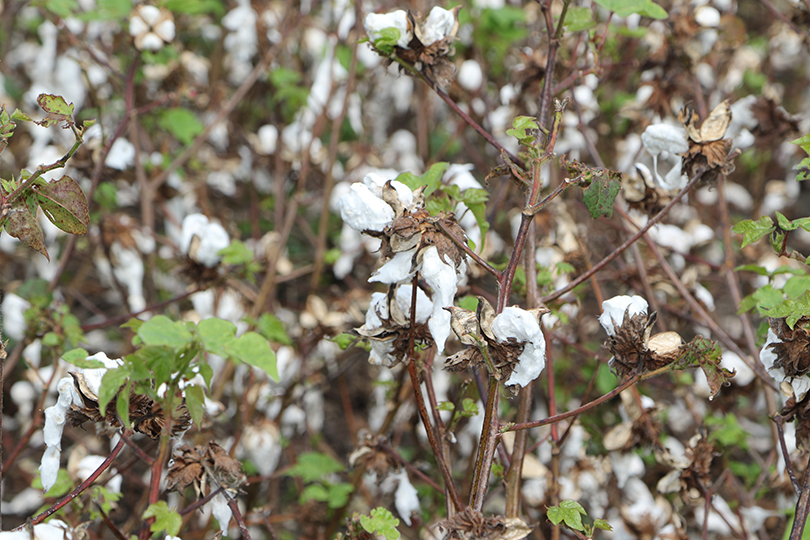By Shala Gean
Communications Specialist
A promising cotton crop was washed away when Hurricane Harvey made landfall at the end of August, leaving farmers trying to salvage what was left of their crops.
Carey Orsak had planted 500 acres of cotton in Matagorda County, one of the counties hit by torrential rainfall and subsequent flooding. He was only able to harvest half of his cotton before the storm hit.
Orsak said module trucks from the gin raced to move the bales to higher ground on his farm before the storm hit.
But despite their efforts, more than two feet of rainwater flooded Orsak’s fields and damaged his cotton.
“With 26 inches of rain, we had a lot of that cotton either flooded three or four feet deep on the modules or some of it had a foot of water on it,” Orsak said.
He had 50 conventional modules picked before the storm. He said 16 out of the 50 modules may have a reduced quality and five are a complete loss.
Due to the flooding, Orsak had to wait two weeks before he was able to get back in the field.
When he did, the cotton crop was disappointing compared to his quality and yields prior to the Category 4 storm.
“We’re talking yields in a three to three-and-a-half bale range prior to the storm,” Orsak said. “And after the storm, it’s probably less than half of that, and the quality is going to be a lot less.”
He noted gin production in the area slowed significantly, because the gins have to wait on the cotton to dry out and run the cotton through slower.
“If they were ginning 40-50 bales an hour, now they’re ginning about 20-25 bales an hour,” Orsak said. “So production and ginning is almost cut in half.”
The cost of ginning is also increasing, because gins have to run the cotton through slower.
Adding to the growing list of problems for cotton farmers, cottonseed likely won’t pay for the cost of ginning due to reduced quality, according to Orsak.
He said all farmers in the region are in a “wait and see process.” They won’t know until the ginning process is complete how much it will cost to gin and if the seed is good.
Orsak’s pocketbook took a hard hit. He said his crop insurance will not kick in because he harvested above his insurance guarantee yields.
He estimates he has lost around $250,000 of gross income from the storm, but it could amount to more than that.
“We were all happy that we had such a good crop, and then it was like a punch to the gut realizing what happened to you,” Orsak said. “We were going from a really good year to a little above break even.”
Orsak’s decision to use a smaller independent cotton gin has affected his losses, because the gin did not have flood insurance.
“There are a handful of farmers who use independent gins that are really taking it on the chin,” Orsak said. “They did not have any flood insurance on cotton or water damage insurance.”
Orsak said this will set him back, but he hopes he will be able to scratch by for another year.
“The biggest thing that would help us is if prices would somehow go up,” Orsak said. “But it looks to be a big cotton crop across the U.S., so it may not happen.”
The flooding from Harvey will also increase cultivation costs to get the soil back into shape.
“We’re going to use a little extra diesel cost because when the flood- water floods over the field, it really tightens up the soil and compacts it,” Orsak said.
The sense of uncertainty still looms for many cotton farmers along the Gulf Coast.
“This whole thing is still kind of unraveling, and it’s like an ongoing process where we’re finding out what we may get out of this crop,” Orsak said.

